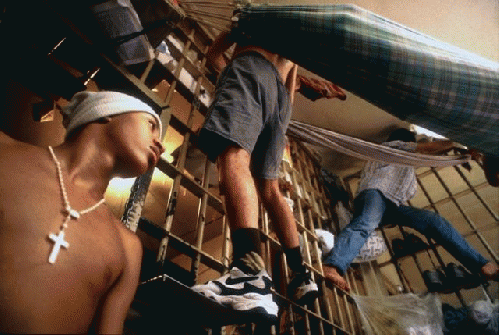Ours is a retributional model of justice, based on assigning blame and dispensing pain. It looks backwards, as Howard Zehr notes, with an orientation to the past and an appeal to legal codes: "What law was broken?" "Who did it?" "What do they deserve" Deplorably, our justice system is contaminated with racial bias. Evidence shows the death penalty is more likely to proceed against defendants who kill white victims than cases involving killers of African-American and other minority victims.
Restorative Justice is an alternative model that, in many cases, lessens recidivism in Africa, Asia, South America and Europe. Begun in Canada in the mid-1970s, the restorative justice movement initially brought offenders to the homes of their victims to learn how their crimes had impacted them and their families. The idea is that direct communication and empathy foster moral development.
The restorative approach puts victim and offender center stage. Instead of appealing to abstract principles of the state, it tries to repair the harm inflicted on interpersonal relationships and the community. Of crucial importance is providing restitution to those violated such as financial aid, repair of property, or humble gestures of verbal exchange. Restorative mediation has arranged meetings between murderers and the survivors of those killed, usually long after a sentence has been imposed. Face-to-face encounters between victims and their offenders often cut repeat offense.
Restorative Justice aims to rehabilitate the offender, rather than uproot them from humanity. It holds them accountable for their crimes, yet addresses the need to integrate them into society by restoring familial relationships and nurturing new connections to "godparents" and mentors. But despite all these good efforts at improving our criminal justice system, a cultural reluctance remains.
A major impediment to restorative reform is the psychological process called "splitting." This dynamic frequently operates in groups and individuals. Kevin J. McCamant describes how crime creates divisions within us:
"Crimes, by their
very nature, violate physical and psychological boundaries, evoke
strong affective reactions. Thus by the trauma they induce, individuals
who commit such acts engender splitting and make convenient and inviting
recipients for the projection of badness. Nevertheless, they may not
be wholly evil and unredeemable any more than other people are wholly
pristine and incorruptible."
We project all the unwanted aspects of
ourselves outwards onto these undesirable "others." In the 19th century it was the Irish, who comprised the largest part of
the inmate population. Then "the Irish became "us' instead of "them,'"
says McCamant, and African-Americans became the main occupants of the U.S. prison, what has been called "Concrete Mama." Now Blacks are the
minority that absorbs many of the intolerable aspects of society.
I don't want to minimize what is, at times, the real threat
of harm that some people pose. But as we pin our unacknowledged anger,
fear, and guilt on criminals, society uses those behind bars to feed other, more
covert, psychological needs. This tends to increase the pain afflicted inappropriately.
Is there a place for punishment in restorative practice? Does it ever dispense retribution and impose the isolation of dangerous persons? "Yes," Zehr answers, but he argues for punishment administered without ulterior motive, as in using offenders as a projection screen for the repudiated parts of ourselves. Under our current penal system we all suffer excessively, prisoners and free citizens alike.
McCamant, Chief of psychology services at a maximum-security prison in Maryland, says incarceration today is more than a form of collective retribution. It is an act of scapegoating, the consequence of a philosophy of justice that is sadomasochistic. Such a psychological dynamic can be seen more openly in the criminal punishments of 18th century Europe (from which our current justice system is derived) when the body of the condemned was whipped, branded, or drawn-and-quartered.
To progress beyond the penal system as we know it, we must grapple with certain regressive schisms in society. Let's get a grip on what former prison instructor Edryce Reynolds calls the "fear and despised other" within. Restorative justice reaches across this trenchant divide -- integrating victims' needs, rehabilitating offenders, and addressing demands for public safety.
Why can't we contain our own projections? Maybe the first step is to realize we're making them.
Is there a place for punishment in restorative practice? Does it ever dispense retribution and impose the isolation of dangerous persons? "Yes," Zehr answers, but he argues for punishment administered without ulterior motive, as in using offenders as a projection screen for the repudiated parts of ourselves. Under our current penal system we all suffer excessively, prisoners and free citizens alike.
McCamant, Chief of psychology services at a maximum-security prison in Maryland, says incarceration today is more than a form of collective retribution. It is an act of scapegoating, the consequence of a philosophy of justice that is sadomasochistic. Such a psychological dynamic can be seen more openly in the criminal punishments of 18th century Europe (from which our current justice system is derived) when the body of the condemned was whipped, branded, or drawn-and-quartered.
To progress beyond the penal system as we know it, we must grapple with certain regressive schisms in society. Let's get a grip on what former prison instructor Edryce Reynolds calls the "fear and despised other" within. Restorative justice reaches across this trenchant divide -- integrating victims' needs, rehabilitating offenders, and addressing demands for public safety.
Why can't we contain our own projections? Maybe the first step is to realize we're making them.
____________________________





